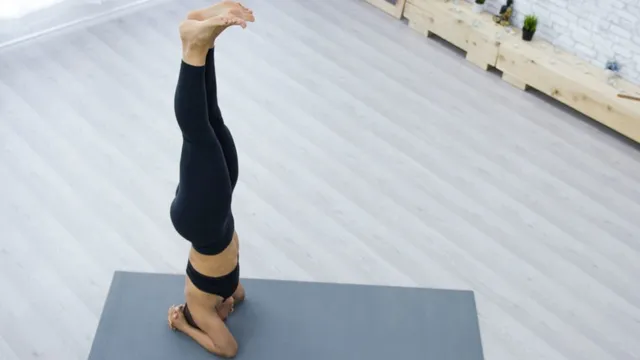
SIRSASANA BEGINNERS
Sirsasana, by its full name Salamba Sirsasana is one of the most important postures in yoga, hence its nickname of the King of postures. In Sanskrit, sirsa means "head" and salamba "support, support". The simple variant as seen in this sequence is the basis from which several variants are declined.
The inversion in the final pose brings a rush of fresh blood to the neurons. Regular practice of this asana opens up new spiritual horizons as this posture increases mental clarity, ability to concentrate and sharpens memory. Practicing this posture with the help of the wall, looking at it, helps to better work the body's proprioception in space. Very often, Sirsasana is taught with their back to the wall, so the students rise very easily in the posture but without paying attention to the alignment or the work of balance. We learn in this sequence to go up in the posture without the back to the wall but facing the wall.
The various benefits of this posture are that it gives vigor, helps fight insomnia, reduces heart rate, fights bad breath, strengthens the lungs, improves the functioning of the pituitary and epiphysis , increases the level of hemoglobin in the blood, relieves symptoms related to colds and tonsils and as well as cough, relieves digestive and elimination problems when practiced with Salamba Sarvangasana. Mastered Sirsansa brings a feeling of lightness to the brain and complete relaxation throughout the body.
Sirsasana also helps connect to the crown chakra which is located at the fontanel of the skull and is associated with the nerve center in the skull. Connecting to Sahasrara allows us to look at our relationship with the Universe, the divine consciousness and it is he who leads to Awakening and Enlightenment.
When Sahasrara is activated, our sensitivity and our creative sense are heightened, we feel empathy, the heart and mind are free and we feel no fear because our intuition and our communication lead us exactly where it is needed.
So obviously to be able to connect to Sahasrara you need practice and patience, but if you get your beginners used to getting on your head regularly from the start, they will thank you!
Access the annotated class sequence with posture images and join the community of teachers!